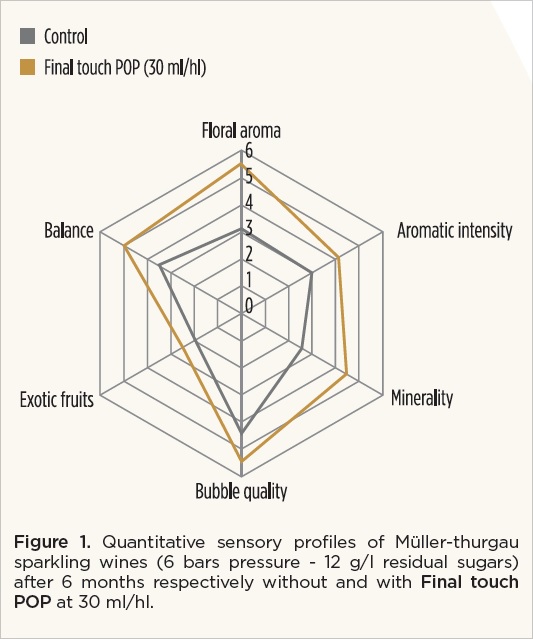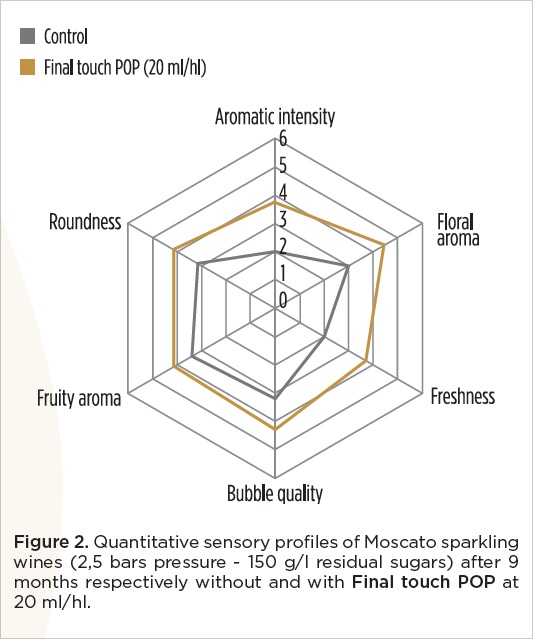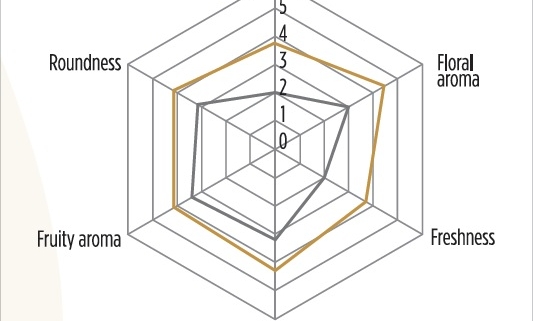European trends in the use of mannoproteins
Introduction
There has been a lot of research done recently on the use of mannoproteins in winemaking which has led to the release of several new products into the marketplace. These new products are making quite an impact on the sensory properties of sparkling, white and rosé wines. Mannoprotein products are being used in large quantities in some overseas countries, particularly Italy and France, as I discovered on a recent trip to Europe. This article looks at how these products are produced, the use of the mannoproteins and finally, the impact they can have on wine quality.
Recap on properties of mannoproteins
As I discussed in an article a few years ago (1), the first main commercial use of mannoprotein products was in the application of potassium hydrogen tartrate stability. There are many benefits to this practice, including lower energy costs, less waste of wine and in some cases, reduced need for investment in capital equipment. This application of mannoproteins is now well accepted and widely used. In this context a recent review article (2) explained in great detail how the inhibition of tartrate crystal growth was achieved by materials such as mannoproteins, and gave some interesting insights into the mechanisms involved.
Mannoproteins occur naturally during fermentation and aging on lees. The structure of mannoproteins includes a peptide backbone and branched chains of mannose that are linked to the peptide by glycosidic bonds. Mannose itself is a sugar and is in fact an epimer (a stereo isomer) of glucose – meaning it is only very slightly different in structure to glucose. There is a wide range of possible configurations of these very large molecules and so a wide variety of possible product formulations is possible.
Mannoproteins are derived commercially from specific strains of Saccharomyces cerevisiae yeast and so when used in wine no extraneous synthetic material is added. Mannoproteins are of course found naturally in wine as an in situ by-product of storage on yeast lees. Therefore, this has enabled the commercial extracts to be widely accepted and legislated as a suitable additive for wine, and one with very good colloidal properties. This regulatory acceptance of these products is a fairly recent and welcome change and gives a relatively new set of additives that can be used by winemakers in their never-ending quest to produce even better wines.
Experience in Europe
During a recent European Conference, I visited the site of a major yeast production facility in Denmark to observe the production of these new mannoprotein products. From discussion with delegates from many wine producing countries around the world, it was obvious that these mannoprotein products are now widely used as additives for enhancing the mouthfeel and freshness of wines. Tastings of some of these wines at the conference showed marked improvements in the wines that had used mannoprotein products when compared to the control wine.
Sparkling wines
Recent work on specific fractions of mannoproteins has shown that when the correct fraction is extracted and used in sparkling wines, the freshness, effervescence and mouthfeel can be greatly improved. At the European conference, the differences were quite remarkable between the same wine dosed with the correct level of mannoprotein compared to that without. It is no great surprise that these properties would be affected – methode champagnoise sparkling wines are kept on yeast lees for varying times – the longer the time, the greater the impact of lees, and therefore the effect of the mannoproteins.
When using mannoproteins with sparkling wines, the product is added with the dosage liqueur after disgorging, with the traditional (Champagne) method. If the wine is being produced by the Charmat method, the product is added after the secondary fermentation and just before bottling. The impact is apparent in the resulting wines whichever of the two methods are used.


I recently attended a tasting of mannoprotein trials with a major Charmat wine producer in Australia, a sparkling wine was tasted that had been in bottle for over 6 months. The wine from the control bottle had no bubbling after approximately an hour of sitting in a glass on the tasting bench; the glass with the same wine treated with the mannoprotein was still bubbling after this time. Although this is only one observation, it is an indication of how impressive the change in properties can be, with the use of these products.
White and rosé wines
Other specific mannoprotein fractions have been extracted for use in white and rosé wines. The use of these fractions has been shown to increase the freshness of wines and also to improve the organoleptic qualities. At the tastings I attended in Europe, this difference was quite noticeable.
One point that was of great interest was the apparent long lasting freshness exhibited by some white and rosé wines that had been in bottle for over a year. This could be a great advantage for some varietals and wine styles, by providing an extension to the shelf-life of the wine. This property is certainly being taken advantage of by many French rosé producers.
Application
The mannoprotein products I observed are in a stable, liquid and soluble form and are added to the wine after all other finings and stabilisations are completed, just prior to bottling. There is no colour change in the wine and no particulate matter is formed. A final filtration at bottling is all that is needed to finish the wine.
Upon addition, the mannoprotein acts immediately and has long-lasting effects. The typical addition rates are from 10 to 50 millilitres per 100 litres of wine. The dosage required is decided by bench trials and tasting. The impacts to be observed from the treatment of wine with mannoprotein include enhanced freshness, improved mouthfeel and in the case of sparkling wines, increased effervescence.
Conclusion
Mannoprotein products are now used in winemaking to not only provide potassium hydrogen tartrate stability but also to enhance certain properties such as freshness and mouthfeel in white, rosé and sparkling wines. Sparkling wines also experience an increased effervescence. These products are now widely used in Europe, particularly in Italy and France. The dosage rate is determined by doing bench trials and tastings. Winemakers now have another set of tools to use in their never-ending quest to produce perfect wines.
References
1. “Mannoproteins – how are they used in winemaking?”, Howell G; Australian and New Zealand Grapegrower and Winemaker, Issue 587, 2012, 74
2. “Potassium bitartrate crystallisation in wine and its inhibition”, A.D. Coulter et al; Australian J. Grape and Wine Research, Issue 21s1, 2015, 627
Greg Howell is the founder and Managing Director of Vintessential Laboratories. He can be contacted by email on [email protected]/. More articles on related topics are available on the Vintessential website: www.vintessential.com.au/resources/articles/

